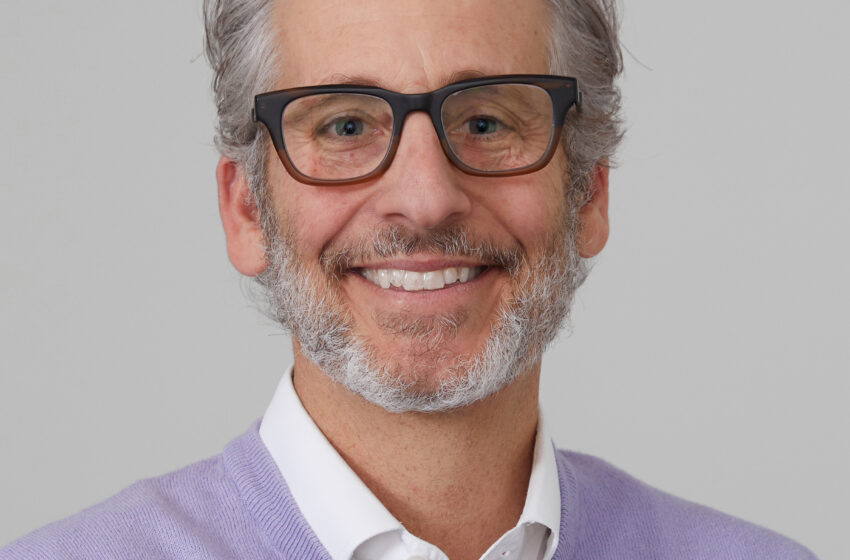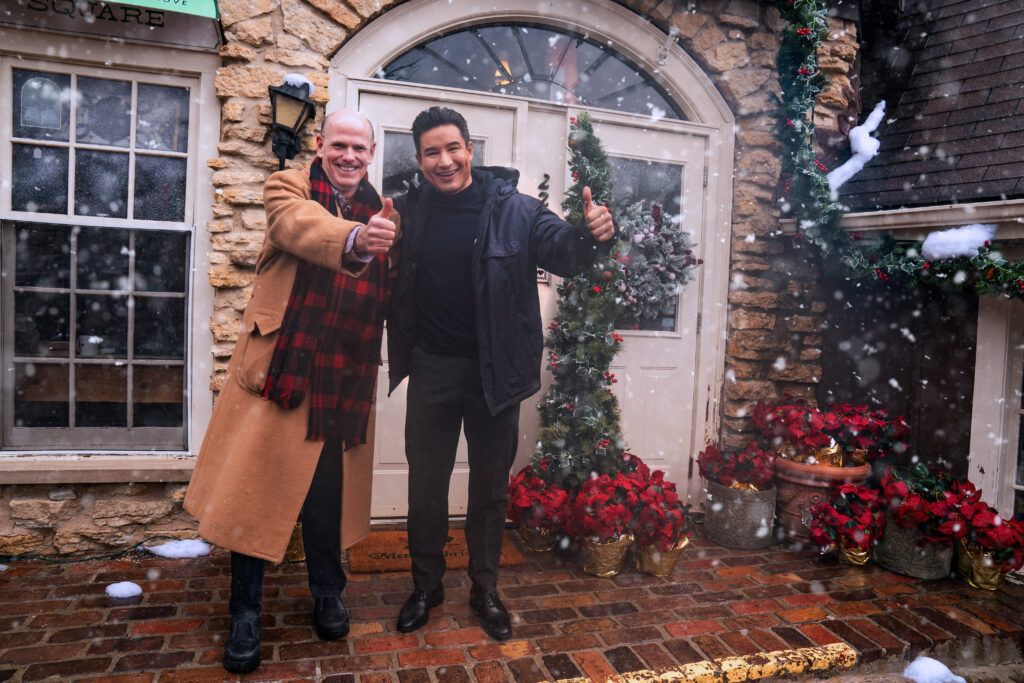CEO Interview Series: Adam Blumenfeld Varsity Brands
- February 20, 2024

In the lively atmosphere of New Orleans, Adam Blumenfeld’s initial college plans, centered around tennis at Tulane University, took an unexpected turn towards the realms of finance and entrepreneurship, inspired by his father, the founder of BSN SPORTS. This shift began an extraordinary journey from aspiring athlete to CEO of Varsity Brands, showcasing a path filled with adaptability, resilience, and visionary leadership.
Our interview with Adam offers a deep dive into his unique transition from sports to spearheading a business empire, emphasizing the lessons absorbed from his father, the intricacies of entering the family business, and the evolution of his leadership approach. We discuss the strategic decisions that shaped Varsity Brands, Adam’s insights for future leaders, and his perspectives on balancing personal and professional life. This narrative not only charts the course of a dynamic career but also serves as a guide for navigating the complexities of leadership in the modern era.
When you decided to go to Tulane and get a degree in English, what was the plan?
To be perfectly candid, when I went to Tulane, my plan was all about playing tennis. I had this vision of riding the Green Wave [Tulane’s sports program] from college into the pro circuit. But I quickly learned, as many junior tennis players learn, that there comes a point where you max out your game, and for me, that realization came sooner than expected. It wasn’t until my sophomore and junior years, amid the distractions of New Orleans, that I even started to consider a path outside of sports.
But by the time I hit my final semester as a senior, my interests had taken a sharp turn toward the stock market, inspired by my father. He was a true entrepreneur, having built BSN SPORTS from the ground up and creatively navigating the capital markets to grow his business. Growing up, I learned by osmosis about tapping the capital in financial markets and doing reverse mergers. I found myself drawn to that world, the strategies and hustle of it all. So much so that by the time I was ready to graduate, I had installed a ticker tape machine in my dorm room to trade stocks with whatever little cash I had.
After graduating from Tulane, I went to work at Bear Stearns, not even considering joining my dad in the family business. Yet, about a year into my stint there, my dad called me up with an opportunity I couldn’t ignore. He had just signed a deal with the National Youth Sport Coaches Association out of Florida and was bringing on Dave Hostetler, a big name from the Texas Rangers, to spearhead a new youth sports division at BSN SPORTS. He asked if I wanted to partner with Dave and build something from the ground up. That’s how I found my calling in the business world, a place that never crossed my mind when I first decided to pursue my degree at Tulane.
The father-son dynamic has always interested me. Sometimes, the father really pressures the son to keep the legacy going. But it sounds like it was the exact opposite for you. It just worked out that you were the right person at the right time.
I think my dad always had in the back of his mind that we’d team up in business one day, but he never pushed it on me. When I joined the company, we were elbow-to-elbow at the same desk for the better part of a decade. My dad is a force of nature in the best possible way. I learned irreplaceable lessons from him, an entrepreneur who started a business with no money and grew it into a few hundred million dollars in revenue.
Stepping into the business, there were no off-limits for me. It was all about diving in, experimenting, making mistakes, and learning on the fly. I had to navigate the basics of the business, like understanding the balance sheet and managing inventory, almost from scratch. Those early years were about selling, sure, but also about forming genuine connections and slowly grasping the actual weight of business decisions. Over the course of five or six years, I transformed myself—with a lot of help—from a kid eager to sell, sell, sell to someone who could see the bigger financial picture and the impact of the decisions I was making.
What advice would you give to other CEOs who have kids and are thinking about them being involved in the business?
This is a highly relevant question with a daughter who just started her career in investment banking and a son in his junior year of college. Fresh out of Vanderbilt, my daughter dove into the bustling work of New York finance, while my son, much like I was at his age, is still piecing together his direction. Selfishly, I would love for one or both of them to end up back in the business one day; although it is no longer a family business, I love the sentimental idea of working together.
To my son, my advice was clear: “Step out into the world first. Work for someone else, learn from the ground up.” The lessons learned from that kind of accountability, from navigating workplace dynamics outside the familial safety net, are invaluable. However, I’m not against him interning with us. As I told him, no other internship on earth can give him exposure to finance, innovation, HR, distribution, and so on. That way, he can figure out what appeals to him the most and then, maybe, bring those insights to bear when he graduates.
You mentioned you’ve got two divisions. There’s always the question: Are you running one company with two divisions, or are you running two independent but linked companies? How do you look at that?
It’s a great question. BSN SPORTS was its own independent company, rooted in the legacy that my father built. The acquisitions by Varsity Spirit and Herff Jones between 2013 and 2014 marked the beginning of a new chapter, forming one business – Varsity Brands.
Stepping into the role of CEO, my focus has been on bringing the businesses together, more akin to a branded house than a collection of separate brands. Our overarching mission, vision, and culture are critical to this unified approach. People ask me what I do, and the narrative of our business has evolved significantly from simply selling sporting goods and delivering products to schools. Today, we position ourselves as offering holistic solutions to the biggest problem in America: the isolation, anxiety, and challenges confronting today’s youth, particularly in the aftermath of COVID-19. That’s what principals, athletic directors, and coaches want to talk to me about – addressing concerns where traditional federal, state, or local government interventions fall short.
The Varsity Brands IMPACT program epitomizes this mission by providing schools, teams, and clubs access to free services focused on philanthropy, character education, and social and emotional learning. We partner with schools to brand their identity and inject pride, enthusiasm, and passion into the campus so the kids are proud of their school. Research supports our approach, showing that schools with a heightened sense of pride and spirit see improved graduation rates, lower absenteeism and dropout rates, and the kids are more likely to contribute positively to their communities. This mission of elevating student experiences is at the heart of everything we do, supported by a wide range of products and services and partnerships with top brands to help this cause.
The younger generations are seeing a lot of problems that reared their heads during and after COVID. We’ve got mental health issues, obesity, decreasing lifespans. What hope do we have of reversing those trends?
Sedentary lifestyles, increased isolation, and the pervasive influence of social media are pulling people apart—it’s all keeping people from getting out of their houses and doing things together. These are the biggest enemies of health and longevity in America. However, I feel like we’re in a unique position to initiate change. In the post-COVID era, we’ve seen a remarkable surge in participation in team sports and outdoor activities, reaching an all-time high. That’s excellent news. Our job is to sustain that momentum and to grow it.
Early in your career, you had a mental model for business that was basically, “We have this product, we sell it, and we do that without running out of cash.” How has that changed on the path to your current job as CEO of these brands?
I see it very differently now – my outlook has fundamentally shifted. It’s been a journey from a product-centric mindset to one rooted in experiences. Our job today is to create moments of joy and lifelong memories for kids engaged in activities like cheering, dancing, band, or sports. Through our yearbook business, we make tangible keepsakes that capture these moments for a lifetime. We’ve evolved from distributing products to offering services and experiences that resonate on a personal level.
From a humble beginning, we’ve scaled to a business nearing $2.5 billion, which reflects our change in how we think about who we are and what we do. Growth has allowed us the privilege of strategic foresight, a luxury we didn’t have in the first 20 to 25 years when our focus was on keeping the lights on. The early days were about mailing catalogs and collecting orders, but now we thrive on building relationships.
We’re actively working to elevate individual and community experiences by creating that connectivity between the fan base and the athletes. We call that building FANDOM. It’s the connective tissue between the kids as heroes on Friday nights and the broader supporting community. How can we inject vibrancy into the campus, the uniforms, and school merch to get the kids engaged and excited? Getting kids excited about playing team sports or being involved in extracurricular activities is a huge part of getting them out of passive digital consumption and into engaging in real, collective activities.
You mentioned team sports, but I’ve always felt like individual sports—tennis, wrestling, swimming, some of those—are in some ways better preparation for the CEO role. How do you feel your tennis background influenced how you deal with issues at that level of leadership?
That’s a great observation. Playing tennis competitively from age 10 to 20 was a masterclass in discipline, resilience, and mental fortitude. It was quite an experience to practice relentlessly, refining your skills in a solitary way or squaring off against peers who shift from friends to competitors come tournament time.
The essence of leadership isn’t just about individual prowess. It’s profoundly about team dynamics, too. The camaraderie, the collective effort, and the shared vision in team sports mirror the bedrock principles of leadership. It’s about working as a team, elevating others, putting yourself second, embracing the ethos of servant leadership, and understanding that the energy and intention you put out there has a way of circling back to you, often magnified.
My collegiate fraternity experience also taught me a great deal. As an only child, immersing myself in a brotherhood where athletic, social, or leadership roles intertwined was transformative. It wasn’t just about navigating the politics of running for office in the fraternity or spearheading an event; it was a comprehensive workshop in empathy, strategy, and collective achievement. These lessons have helped me today as a businessperson more than anything else I’ve done. I wouldn’t substitute that kind of leadership opportunity and interaction with a peer set for anything.
What are you most excited about heading into 2024?
2024 is shaping up to be a landmark year for us. We’re riding a wave of terrific performance from the last few years and are well-positioned to take advantage of that momentum with the opportunities that lie ahead.
Our approach has always been about getting the foundation right, like focusing on the back end of the business before the flashy front-end stuff. I’m talking about the core elements like infrastructure, IT, supply chain, and HR. These are the unsung heroes of scalability and efficiency. We’re continuing to invest in those areas in 2024 while also progressing the digital side of the business. We’re doubling down on robotic process automation (RPA) to streamline operations, a move that’s just the tip of the iceberg.
But what really gets me excited is the prospect of revolutionizing the industry with a do-it-yourself ethos. We’re poised to disrupt the market by empowering individual and team customers to create their own short-run products – highly bespoke, curated, on their schedule, from their computer or mobile device. This is about setting the pace and offering a new level of personalization and flexibility that’s long overdue.
Are there any trends you think other CEOs need to be aware of, especially with up-and-coming generations entering the workforce?
The shift towards remote work is one of the most fascinating trends we’ve navigated recently. During and immediately following the pandemic, the clamor for work-from-home options was unanimous, but it’s clear that something vital gets lost in translation – company culture. In Dallas, our office space is designed for a thousand people, yet we’re operating with less than half onsite right now. The crux of the matter is finding that sweet spot between offering flexibility, attracting top talent, and keeping the core of our culture intact. Flexibility is undoubtedly valuable, but there’s a limit to how much of it you exchange before you compromise the essence of what makes us who we are. In my view, a vibrant company culture can’t fully thrive when everyone is remote. It’s like trying to play a team sport from your living room. The energy, the collaboration, the spirit – it’s just not the same. We’re actively working to physically bring our team back together because that’s where the magic happens.
This brings me to the evolving expectations of the younger generations, my own kids included. They’ve weathered some truly unique storms, shaping their views on work-life balance in eye-opening ways. I recall recently offering a promising opportunity to a friend’s daughter, only for her to respond that she’d circle back after her vacation – a concept utterly foreign to my younger self. That’s a stark reminder of the shifting priorities, with personal time and autonomy now at a premium.
It’s precisely this shift that’s driven us to prioritize our team’s well-being more than ever. We instituted holiday season shutdowns a few years back, a move we wouldn’t have dreamed of two decades ago. But today, it reflects our focus on well-being, allowing them the space to reset and recharge. Our goal is to cultivate an environment where support is second nature, and collaboration fuels our collective mission to elevate student experiences. This approach isn’t just about maintaining productivity; it’s about ensuring our team feels valued and connected, ready to bring their best selves to the work that makes a difference.





